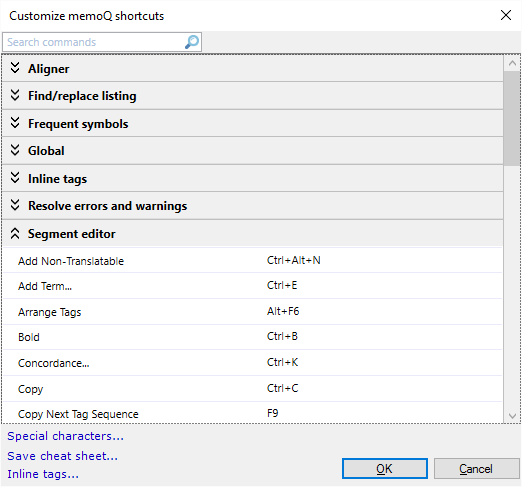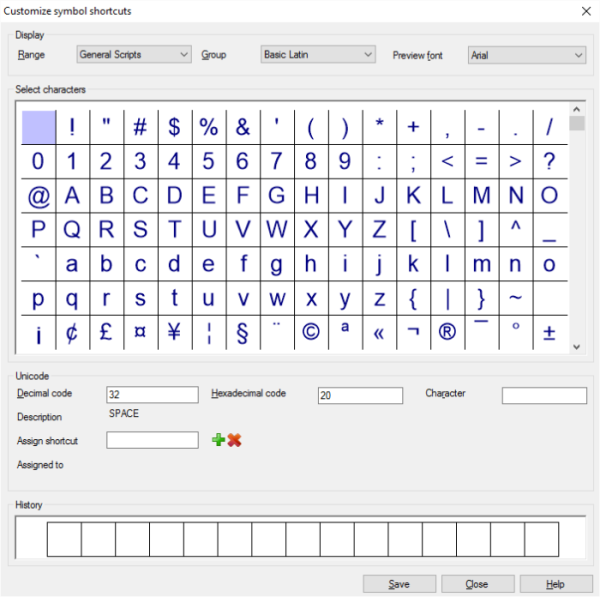|
In memoQ, some of the shortcut keys are customizable. The shortcuts are grouped in categories. The Customize memoQ shortcuts dialog allows you to edit shortcuts directly. It is important that you cannot edit the default set of shortcuts; first you have to clone it and then you can edit the cloned copy.
How to beginOpen the Options dialog from the Quick access toolbar (click You cannot edit the Default shortcut set: Clone it or create a new one before editing.
UseThe pane contains a list view showing the customizable current shortcut keys. You can show or hide shortcut categories in clicking the arrow icon next to a shortcut category. Search for a shortcut in entering the shortcut name in the Search field, then press Enter. Hover over a shortcut name to display the Edit and Remove icons. Click the Edit (the pencil) icon to enter a new shortcut in the text field. Click the Remove icon to remove a shortcut and free the associated shortcut combination to be used for something else. Example: If you want to insert or edit a shortcut for Mark Text, press Ctrl on your keyboard, then press Shift and M on your keyboard to enter the shortcut. If the shortcut is already taken, you get a message from which command this shortcut is used and will be removed to reassign it. Activate the shortcut set after editing: After you edit the shortcut set, make sure you make it active in the Keyboard shortcuts pane: check the check box to the left of its name. Options•Category: This title bar indicates the main category for all related shortcuts, e.g. Aligner document and all associated shortcuts for performing an alignment. The categories are sorted alphabetically. •Shortcut key: This column indicates the shortcut keys assigned to the different commands. To modify a shortcut key, click the appropriate row in the Shortcut key column, click the Edit icon, enter a new shortcut, and press Enter (or click the Plus icon) or select another field. If an option like Special character (Left-To-Right Mark) has no associated shortcut, click the Edit icon to insert a shortcut for this command. If the shortcut you entered is already used elsewhere, then it is removed from its current command without further warning. •Save cheat sheet...: Click this link to export your shortcuts as HTML file. You will get a list of all assigned shortcuts in HTML format, which you can also print. •Special characters...: Click this link to invoke the Customize symbol shortcuts dialog. •Inline tags: Click this to open the Customize tag shortcuts window. There you can set up key shortcuts to insert custom inline tags into the translation.
See also: Inserting symbols NavigationClick Save to close the dialog, saving all changes. Clicking Cancel will close the dialog without saving changes. See also: Keyboard shortcut list Compatibility note: If you use memoQ 2015 and older versions in parallel, you can use your own shortcut customizations. Each memoQ version will use its own resource type. If you upgrade to memoQ 2015, you will lose your customized keyboard shortcuts. If you use hotkey scripts such as AutoHotkey, you may need to reassign shortcuts since new shortcuts were assigned by default in memoQ 2015. |

